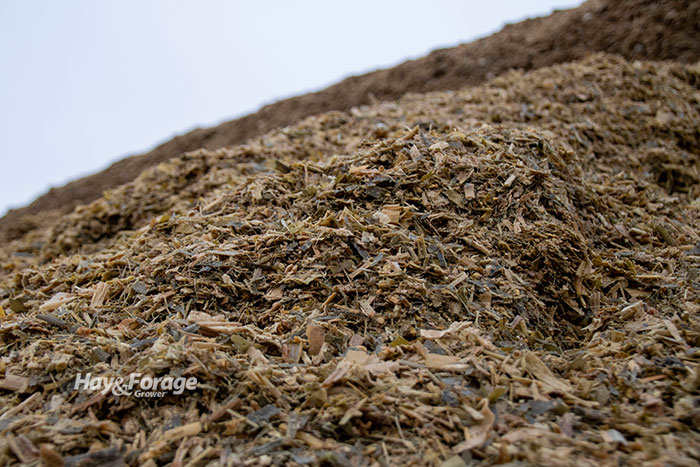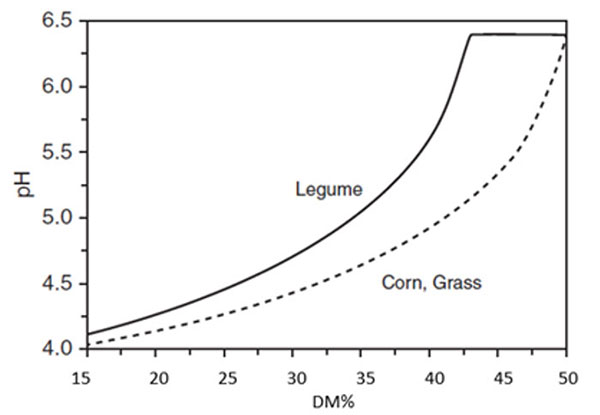
Some considerations for storing silage include packing density, excluding oxygen, and applying inoculants. Silage must also achieve a specific pH to undergo proper fermentation and maintain forage quality during storage; however, this value varies.
Cody McCary and Michelle Chang-Der Bedrosian, forage specialists with Vita Plus, assert that a low pH is the best tool to combat butyric fermentation, which can create an ideal growing environment for bacteria like clostridia. Even though it is best to bring down silage pH as fast as possible, the degree to which it must be lowered depends on forage dry matter (DM) and sugar concentration.
In general, the wetter the forage, the lower the target pH. For example, corn and grass silages harvested at 25% DM require a pH of approximately 4.25 to inhibit clostridia growth. If these types of silage are harvested at 35% DM, they only need to achieve a pH of roughly 4.60 for the same level of defense.
Silage pH is also related to sugar concentration. The specialists note that fermentation is the process of converting plant sugars to acids. “Lactic acid is the primary acid in silages, and this is the acid that decreases silage pH,” they explain. “In general, crops that have more sugars will have a lower pH.”
Legumes like alfalfa tend to have a lower sugar concentration than corn and other grasses. Alfalfa also has a higher buffering capacity, which is the ability of a crop to resist a drop in pH. Therefore, alfalfa silage pH does not decline as drastically as corn and grass silage pH.

Alfalfa that is harvested at 25% DM needs a minimum pH of 4.40 to limit clostridia growth, whereas alfalfa that is harvested at 35% DM only needs a pH of about 5 for the same inhibitory effect. These values are both greater than the recommended pH values of corn and grass silage harvested at the same moisture levels.
Despite these target ranges, many factors can affect the rate at which pH declines. Delays in forage harvest due to weather, labor, or equipment issues can lower sugar concentrations. This can negatively impact fermentation, and thus, silage pH. The longer forage is exposed to oxygen between harvest and storage will result in less sugar and higher silage pH as well.
“Good management practices can be used to decrease silage pH,” the specialists conclude. “Harvest silages at the right dry matter, put up the silage quickly, seal the silo promptly with a proven plastic cover, and use a high-quality inoculant.”

